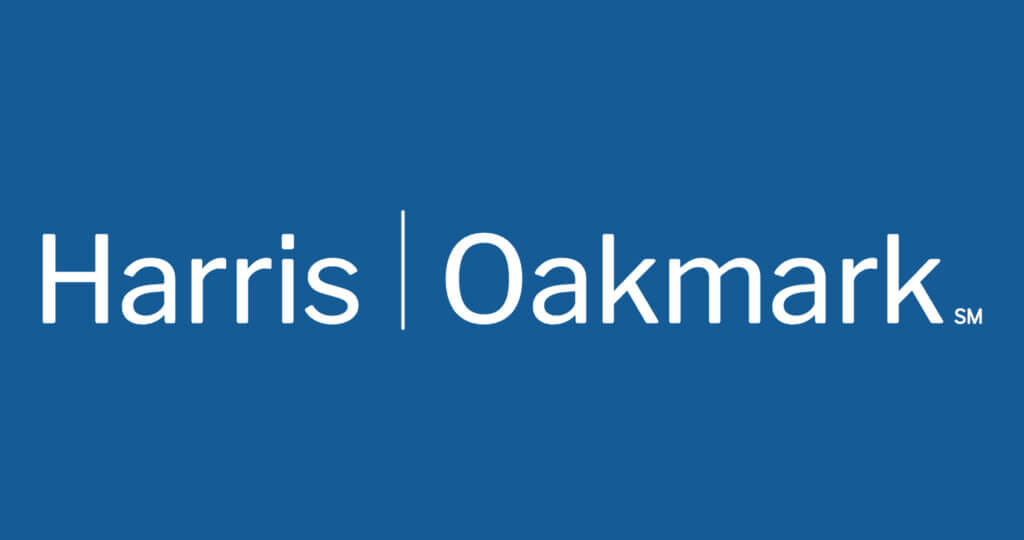Oakmark International Fund - Investor Class
Average Annual Total Returns 12/31/13
Since Inception 09/30/92 11.20%
10-year 10.50%
5-year 21.14%
1-year 29.34%
3-month 4.56%
Gross Expense Ratio as of 09/30/13 was 0.98%
Past performance is no guarantee of future results. The performance data quoted represents past performance. Current performance may be lower or higher than the performance data quoted. The investment return and principal value vary so that an investor’s shares when redeemed may be worth more or less than the original cost. The To obtain the most recent month-end performance data, view it here.
The Oakmark International Fund returned 5% for the quarter ended December 31, 2013, slightly underperforming the MSCI World ex U.S. Index, which returned 6% over the same period. The Fund’s calendar-year performance was strong in absolute and relative terms, returning 29% versus the MSCI World ex U.S. Index’s return of 21%. Most importantly, the Fund has returned an average of 11% per year since its inception in September 1992, outperforming the MSCI World ex U.S. Index, which has averaged 7% per year over the same period.
Intesa Sanpaolo, an Italian retail and commercial bank, was the top contributor to performance for the quarter, returning 20%. Intesa released third-quarter results that showed a stabilized net interest income (NII) and a spread environment that more than offset volume declines. Costs are down 7% year-to-date, driven by head-count reductions of nearly 7,000 since 2011. Management closed nearly 900 branches since 2011 and plans to close another 400 by the end of 2014. We expect additional branch closures will lower costs further, but we don’t expect that cost reductions will continue at current rates. Capital ratios and liquidity remain strong, and management plans to continue its high dividend payout, assuming there are no regulatory constraints.
The largest contributor for the year was Daiwa Securities Group, Japan’s second largest broker, returning 88%. Daiwa released its fiscal first-half results during the quarter that showed pre-tax profit at the highest level since the company started reporting in 1995. Revenues rose across the board in retail, wholesale and asset management, and in total they are on track to meet full-year estimates. Of special note, the wholesale banking division became profitable for the first time since 2009. We expected wholesale banking revenues to be strong due to equity trading and commission activity, but were surprised by the advance in fixed income revenues, which surpassed peers.
The largest detractor for the quarter was CNH Industrial, a global agricultural and construction equipment manufacturer, which fell 11%. CNH released its nine-month results, which showed revenue growth of 0.6%, but the company’s margins were adversely affected by Iveco, its trucks and commercial vehicles segment. Iveco’s margins fell short of expectations due to tough pricing, high launch costs, negative mix and increases in bad debt provisions. Management maintains full-year guidance of 3-4% revenue growth. We believe improvements in the Iveco division will help CNH Industrial achieve its long-term margin targets.
Falling 15%, the largest detractor for the year was Orica, the largest provider of explosives for the mining industry. Shares were weakened by a reduction in guidance in July and by the market’s anticipation that the company would miss its 2013 fiscal-year targets. However, shares rebounded when Orica’s fiscal-year results showed 3% revenue growth and relatively flat margins, which put the company in line with expectations. This demonstrated that Orica’s explosives business is much more resilient than most other areas of mining services. Management has indicated earnings will be higher this year than last but that the environment is leading to higher than normal volatility. During the year 90% of its contracts that were up for renewal were renewed, and any clients they lost were replaced two times over by new contract wins or greenfield business. Also, a year ago two-thirds of contracts were only for products, while today two-thirds of renewal contracts include a service component. We expect Orica to continue its capital-light strategy and that it will produce better cash flow in the future.
During the quarter we sold our position in ROHM as it approached our estimate of fair value. We purchased one new name during the quarter: Schindler Holding (Switzerland), the second largest elevator and escalator company, which commands 16% of global market share.
Our geographical composition changed slightly over the past quarter. Our European holdings increased to approximately 79% from 78%, and our Japan holdings decreased to approximately 12% from 14%. The remaining positions are in Australia, North America (Canada), South Korea and the Middle East.
Global currencies were relatively volatile during the quarter. The Japanese yen depreciated to 105 by the end of the quarter, its lowest level since 2008. We no longer believe the yen to be overvalued and therefore closed our hedge of the underlying currency. The Australian dollar also weakened during the quarter, but we still believe it to be overvalued. As of quarter end we hedged 33% of the Australian dollar, 33% of the Swiss franc and 30% of the Swedish krona exposure.
We would like to thank our shareholders for continuing to support us and our value investing philosophy.
Happy New Year!
As of 12/31/13, Intesa Sanpaolo SpA represented 3.6%, Daiwa Securities Group, Inc. 2.2%, CNH Industrial N.V. 2.7%, Orica, Ltd. 2.5%, ROHM Co., Ltd. 0%, and Schindler Holding AG 0.1% of the Oakmark International Fund’s total net assets. Portfolio holdings are subject to change without notice and are not intended as recommendations of individual stocks.
Click here to access the full list of holdings for The Oakmark International Fund as of the most recent quarter-end.
The MSCI World ex U.S. Index (Net) is a free float-adjusted market capitalization index that is designed to measure international developed market equity performance, excluding the U.S. This benchmark calculates reinvested dividends net of withholding taxes using Luxembourg tax rates. This index is unmanaged and investors cannot invest directly in this index.
The Fund’s portfolio tends to be invested in a relatively small number of stocks. As a result, the appreciation or depreciation of any one security held by the Fund will have a greater impact on the Fund’s net asset value than it would if the Fund invested in a larger number of securities. Although that strategy has the potential to generate attractive returns over time, it also increases the Fund’s volatility.
The percentages of hedge exposure for each foreign currency are calculated by dividing the market value of all same-currency forward contracts by the market value of the underlying equity exposure to that currency.
Investing in foreign securities presents risks that in some ways may be greater than U.S. investments. Those risks include: currency fluctuation; different regulation, accounting standards, trading practices and levels of available information; generally higher transaction costs; and political risks.
The discussion of the Fund’s investments and investment strategy (including current investment themes, the portfolio managers’ research and investment process, and portfolio characteristics) represents the Fund’s investments and the views of the portfolio managers and Harris Associates L.P., the Fund’s investment adviser, at the time of this letter, and are subject to change without notice.






